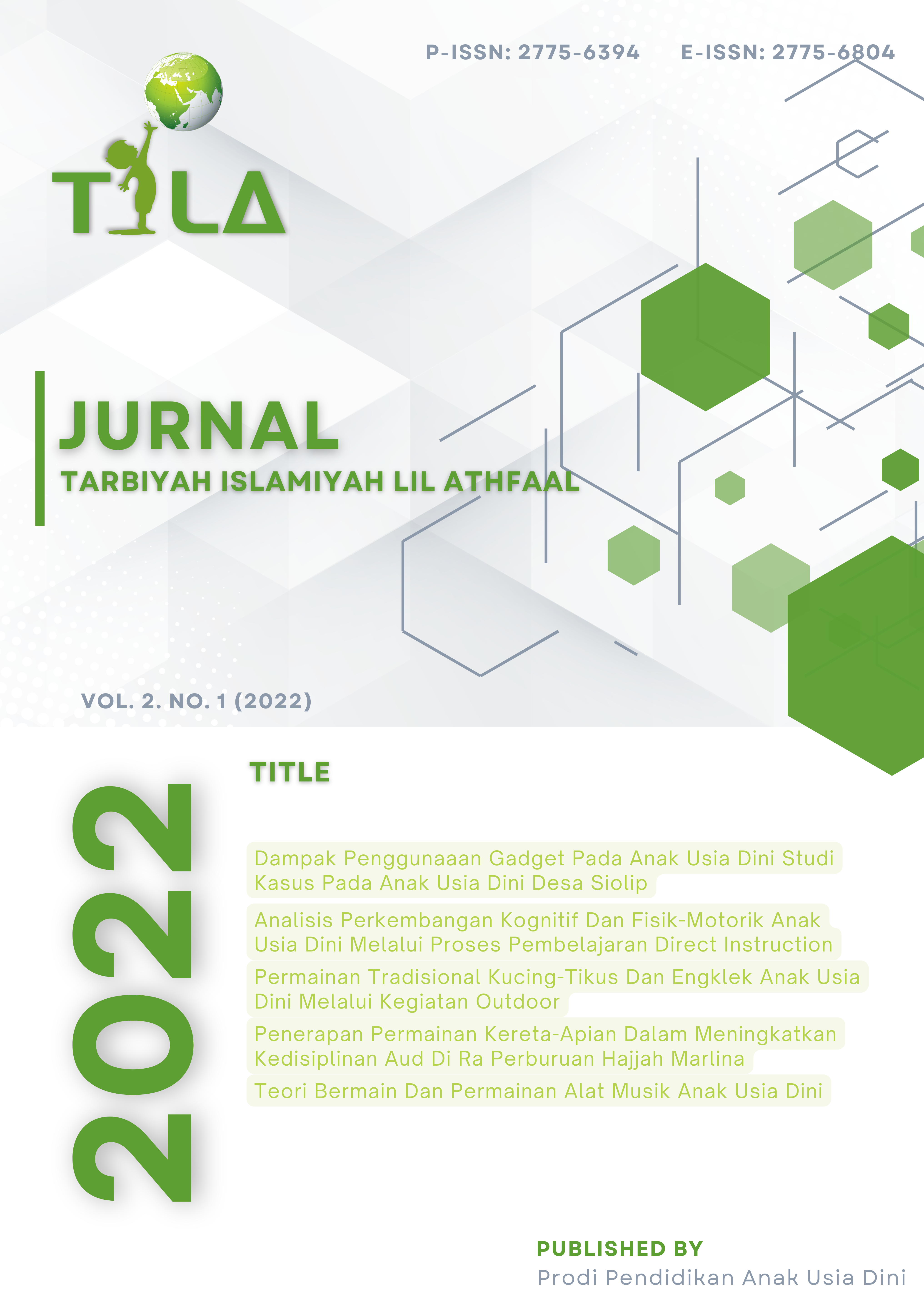Analisis Perkembangan Kognitif dan Fisik-Motorik Anak Usia Dini Melalui Proses Pembelajaran Direct Instruction Analysis of Early Childhood Cognitive and Physical-Motor Development Through Direct Instruction Learning Processes Section Articles
##plugins.themes.academic_pro.article.main##
Abstract
This research was conducted to analyze the cognitive and physical motor development of children through the direct instruction learning process. Direct Instruction is a learning process that is carried out directly which aims to achieve learning objectives. Direct Instruction can also improve children's cognitive and motor skills. This cognitive aspect is related to children's intelligence. Meanwhile, physical motor skills are related to the physical and mental development of children. This research is a qualitative research using Direct Instruction learning experiment. In this study, there are various research instruments, including experimental instruments, questionnaires, interview observations and tests. (Sugiyono, 2018). So, in this proposal, we will discuss how children's cognitive development and children's physical motor skills will develop, whether children's cognitive and physical motor skills will develop if there is a Direct Instruction learning experiment. The results of the research that can be obtained from the researcher are that the cognitive and physical motor skills of children can be improved from this Direct Instruction learning process. Not only that, Direct Instruction learning can also train children's mental and self-confidence.
##plugins.themes.academic_pro.article.details##
References
-
Agoes Dariyo. 2007. Psikologi Perkembangan Anak Tiga Tahun Pertama, Bandung: PT. Refika Aditama.
Depdiknas. 2007 . fisik motorik anak usia dini. Compasiana . co. id. Diakses Pada Tanggal 1 Desember 2021.
Desmita. 2013. Psikologi Perkembangan, Bandung: PT. Remaja Rodaskarya.
Hartati Sofia. 2005. Perkembangan Belajar Pada Anak Usia Dini. Yogyakarta : Hikayat Publishing.
Huitt, W. G., Monetti, D.M, & Hummel, J.H. (2009). Designing Direct Instruction. Instructional-Design Theories And Models : Volume Iii, Building A Common Knowledge Base, 1-20.
Indrijati, Herdina. 2016. Psikologi pekembangan dan pendidikan anak usia dini. Jakarta : kencana.
Maimunah. 2009. Pendidikan anak usia dini. Compasiana. Co.id. diakses pada tanggal 22 Desember 2021.
Maligoro.S.G, Barbara.B.L.dan Jhon.K.B. 2005. Direct Instruction Revisited; A Key Model for instructional technology,ETR&D,vol,53, no 4. Pp, 41-45, diakses pada tanggal pada tanggal 1 Desember 2021.
Moleong J Lexy. 2004. Metode Penelitian Kualitatif. Bandung : PT. Remaja Rosdakarya
Pengembangan Kemampuan Motoric Halus Ditaman Kanak-Kanak, Jakarta : Depdiknas Manajemen Direktorat Pembinaan TK Dan SD, 2007.
Pengertian kognitif teori jean piaget. Compasiana. co.id. Diakses Pada Tanggal 1 Desember 2021.
Rakmat C. Budiman, N. & Herawati,N.I. 2008. Psikologi Pendidikan. Bandung : UPI Press.
Sanjaya. 2009. Metode Pembelajaran. Bandung : Alfabeta.
Sanjaya, W. 2008. Kurikulum Dan Pembelajaran. Kencana Predana Media Group, Indonesia
Sofiyah. 2010. Kekurangan dan kelebihan Direct Instruction. diakses pada tanggal 22 desember 2021.
Sugiyono. 2018. Instrument penelitian. Compasiana.co.id. diakses pada tanggal 1 Desember 2021.
Side. H. 2009, penggunaan media animasi dalam model pembelajaran langsung untuk meningkatkan hasil belajar biologis siswa kelas VIII SMP negeri 13 makasssar dan ilmu pengetahuan alam universitas Makassar, Skripsi, diakses pada tanggal 1 desember 2021
Standar pendidikan anak usia dini (Undang- Undang No. 20 Tahun 2003).
Susanto. 2012. Kognitif anak usia dini. Compasiana. Co.id. diakses pada tanggal 22 Desember 2021.
Trianto. 2007. Model Pembelajaran Terpadu Dalam Teori Dan Praktek. Jakarta : Prestasi Pustaka.

